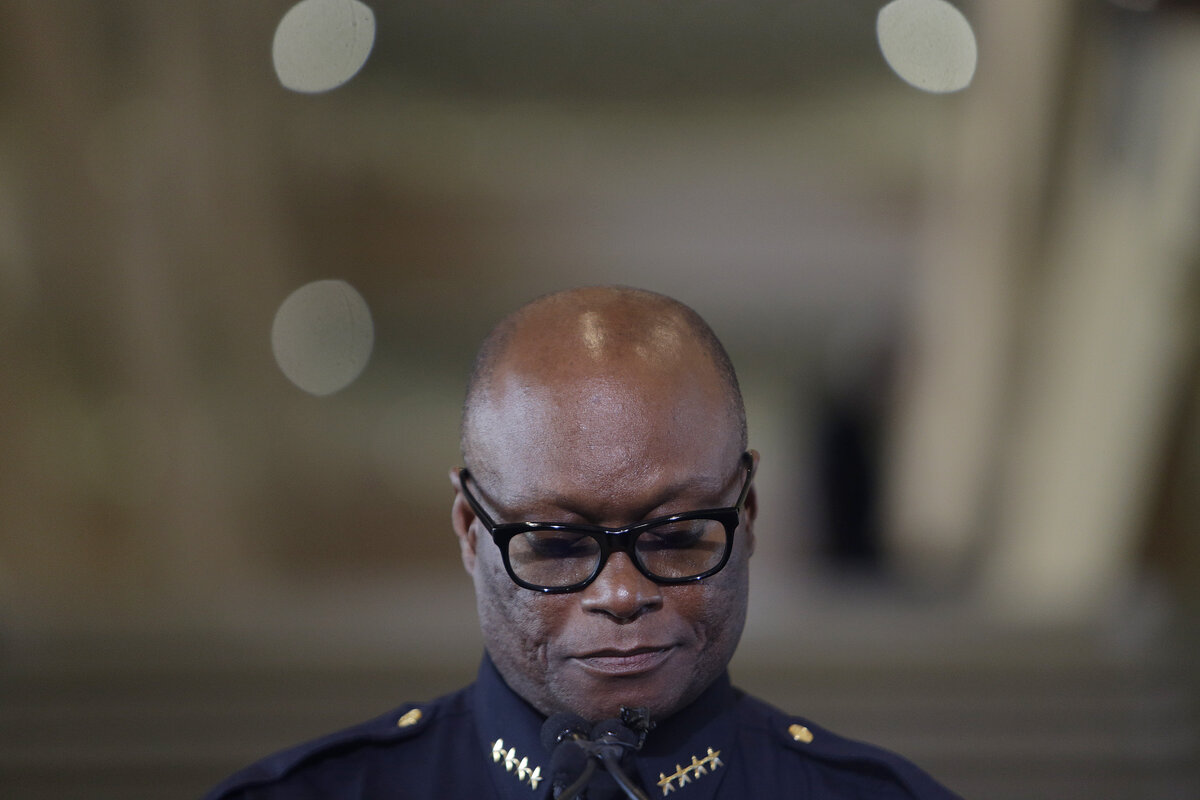False ID in Dallas shooting highlights pitfalls of policing via social media
Loading...
Less than two hours after a suspect shot 12 police officers, killing five and wounding seven, at a peaceful protest in downtown Dallas Thursday night, the Dallas Police Department tweeted a photo of a suspect asking followers to aide in tracking him down.
However, the man in the photo, Mark Hughes, was not the shooter. He was released by police around 11:30 p.m., after turning himself in upon learning he was a suspect. His name has been cleared, but the tweet identifying him as a suspect was still live on the at midday on Friday, and the included image has been republished online hundreds of times.
Social media has become a vital tool for police officers to keep the community informed during high-profile events and to solicit valuable information in ongoing cases. Keeping the public abreast of events in real time, however, leaves quite a bit of room for error, and public, false identification can have an enduring impact on the wrongfully accused.
Mr. Hughes says he immediately found an officer after hearing his photo was being circulated on social media, and was taken in for questions.
A after his brother, Cory Hughes, suggested he do so to avoid being confused for the shooter.
The Hughes brothers said they immediately went to the police when the shooting began to see how they could help, and wound up helping people to hide, and guiding traffic. Cory Hughes he was only at the scene to peacefully protest with his brother, adding that “we don’t want anybody to be hurt.”
Mark Hughes says although he has been released, he wants more from the Dallas police.
“Now you have my face on the national news. Are you all going to come out and say that this young man ” he told Dallas' KTVT.
Others are angry that the Dallas Police Department’s tweet featuring Hughes as a suspect remains on the department’s account.
“Mark Hughes is ,” his brother Cory told the Dallas News. “He was simply exercising his right. He never thought by exercising his right he was gonna be plastered all over the national news as a suspect.”
But Mark is not alone. At the state and federal level, wrongful accusations are proving to be a side effect of immediate information dissemination via social media.
After a string of 11 shootings on Arizona’s Interstate 10 this fall, state law enforcement was having a difficult time tracking down leads. Then in September, Arizona's Republican Gov. Dough Ducey tweeted “We got him!” five minutes after state police arrested 21-year-old Leslie Allen Merritt Jr. outside of a Walmart store. That tweet drew swift criticism from advocates of defendants' rights.
“When he says, ‘We got him,’ you don’t ‘get’ somebody until they’re convicted or plead guilty,” Mike Black, a Phoenix criminal defense attorney . “He’s assuming this young man is guilty.”
Mr. Merritt was at the end of April after the ballistics evidence was deemed insubstantial.
After the bombing of the Boston Marathon in 2013, the media also rushed to identify the suspects, as Joshua Foust noted in an opinion piece for ���Ǵ��� the week following the bombing:
A little bit of bad information could do a lot of damage.
Mainstream media aren’t immune either: The New York Post mistakenly identified a high school student, Salah Barhoun, as a bombing suspect. After seeing his picture on TV and all over social media, he sought help at a police station to clear his name… The rush to report a piece of information can lead to regrettable errors. Despite claims to have cross-checked information, even reputable news organizations can get important facts wrong in the scramble to be first out the gate with news.





